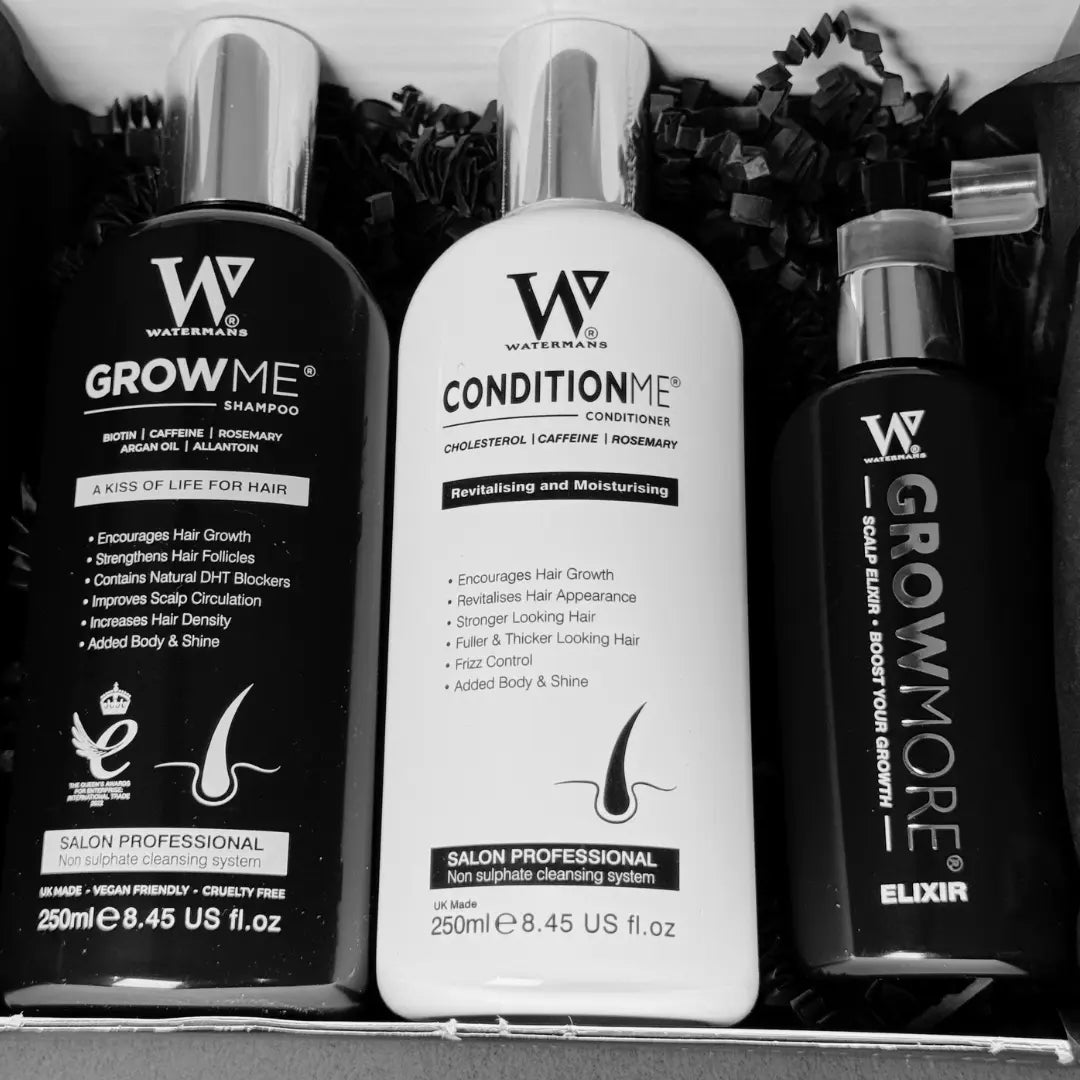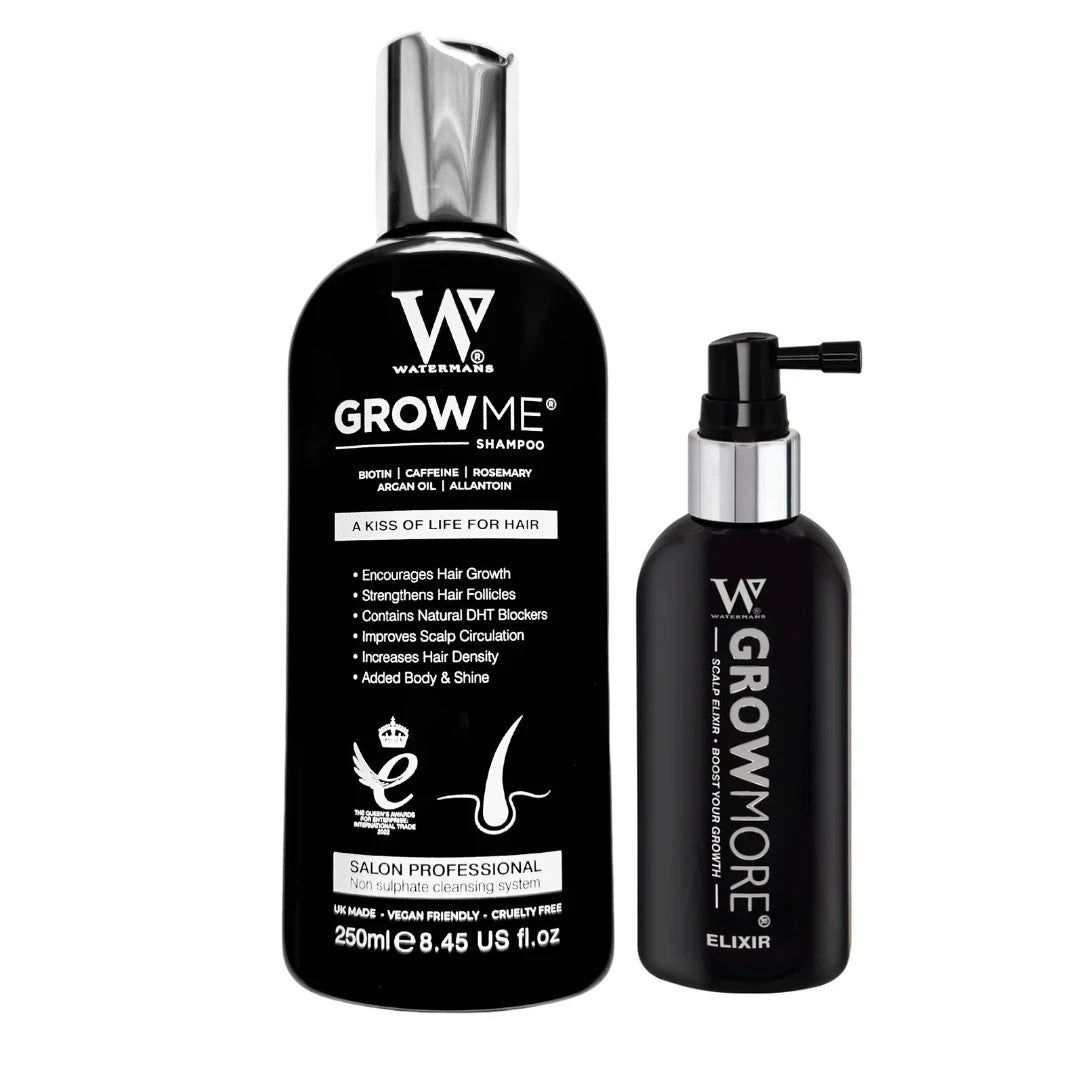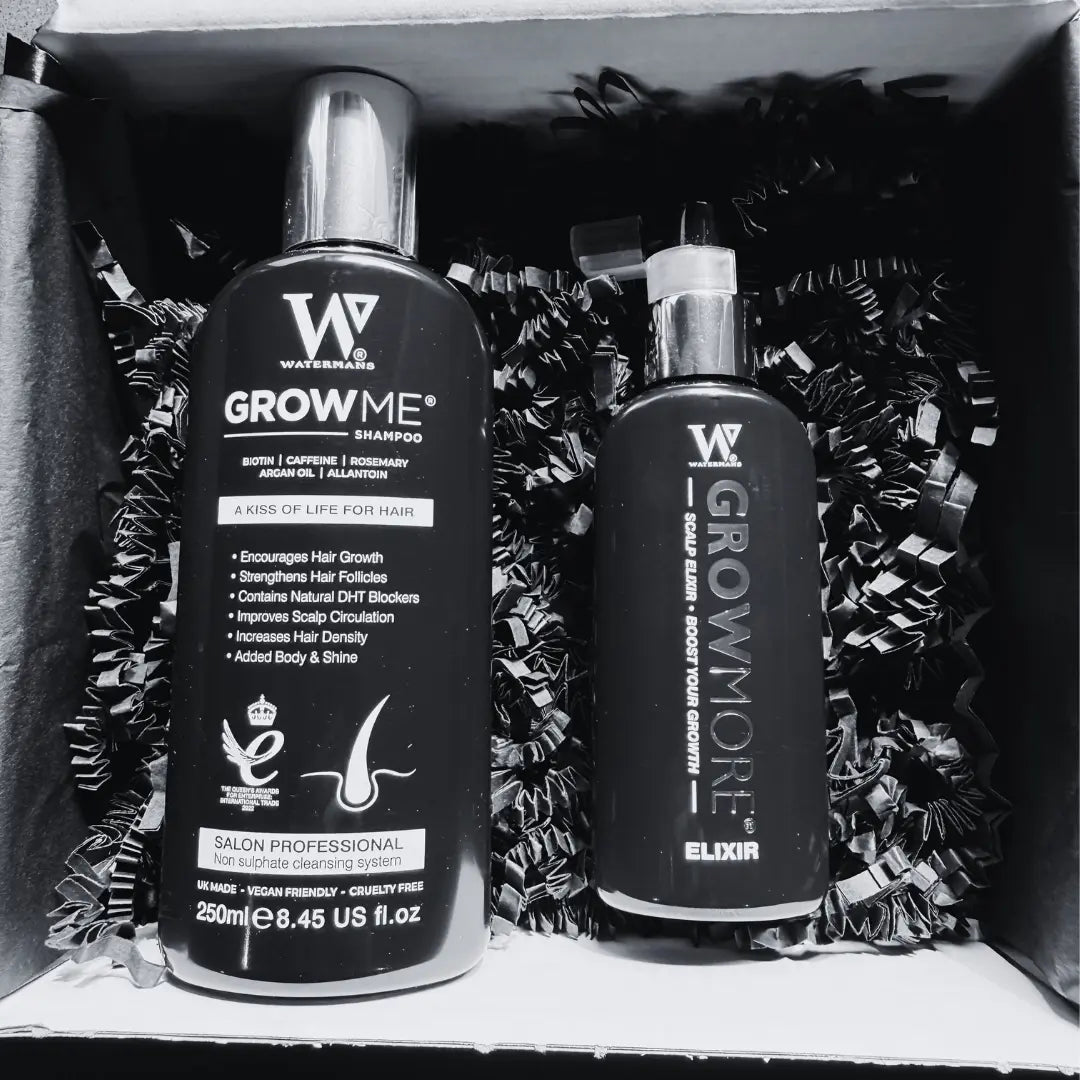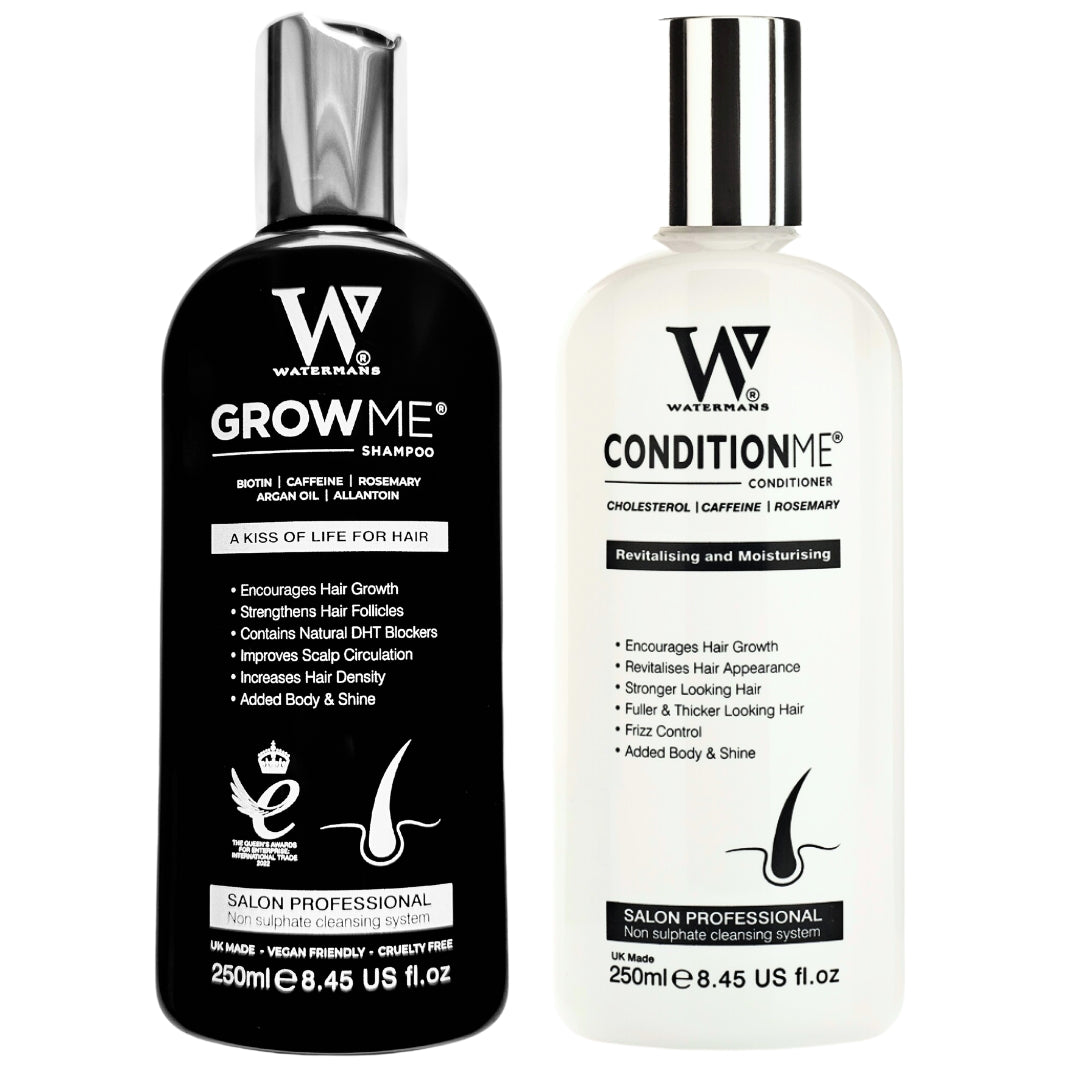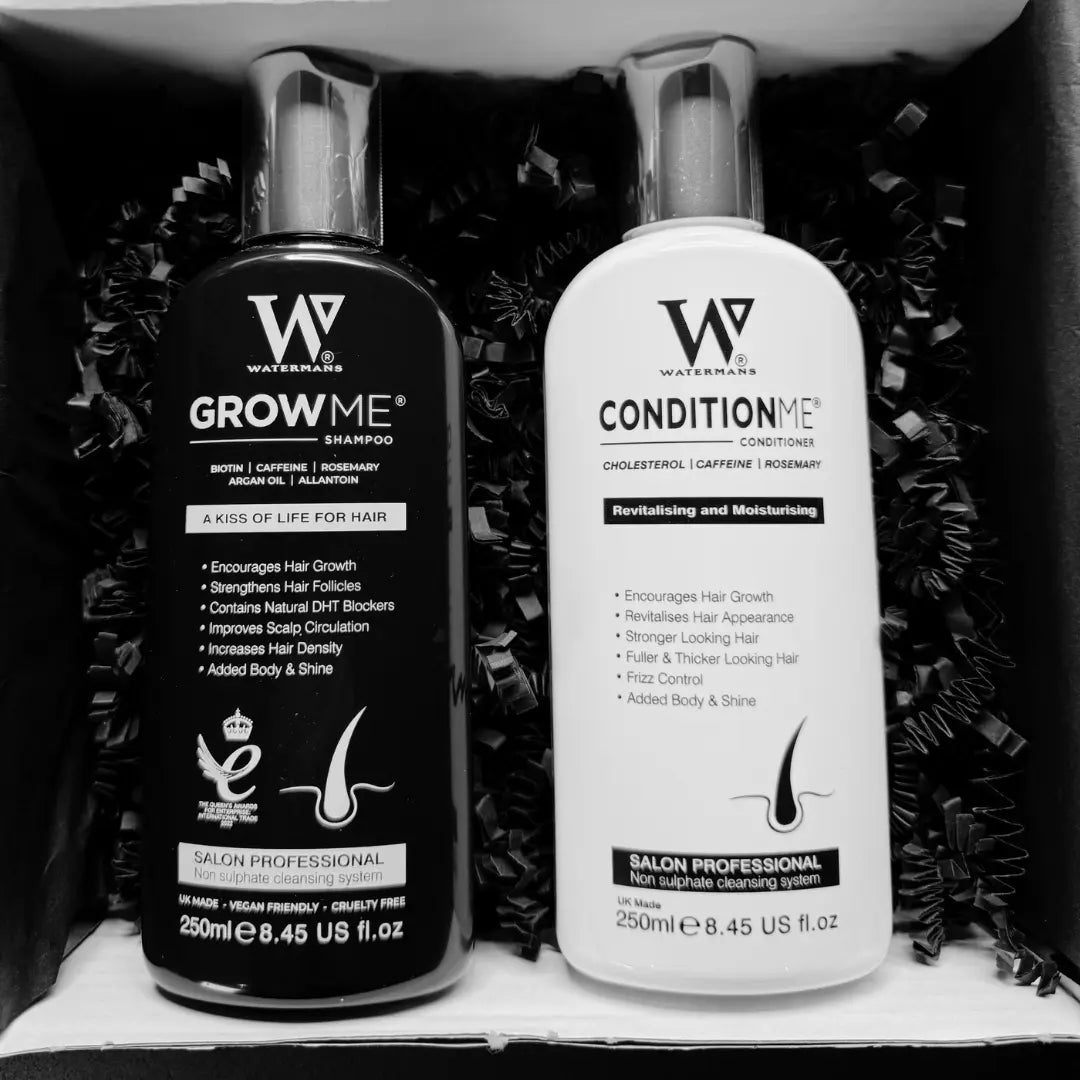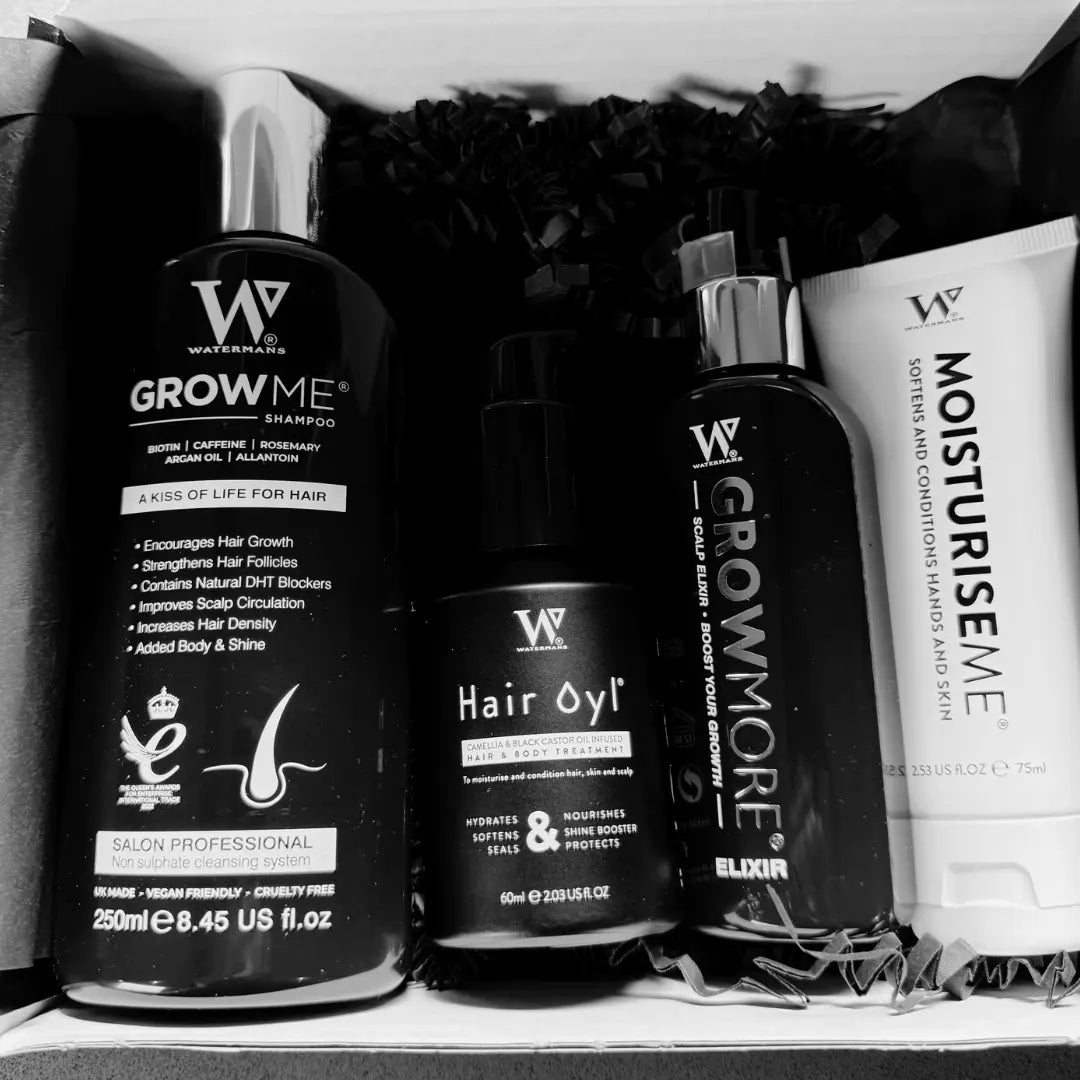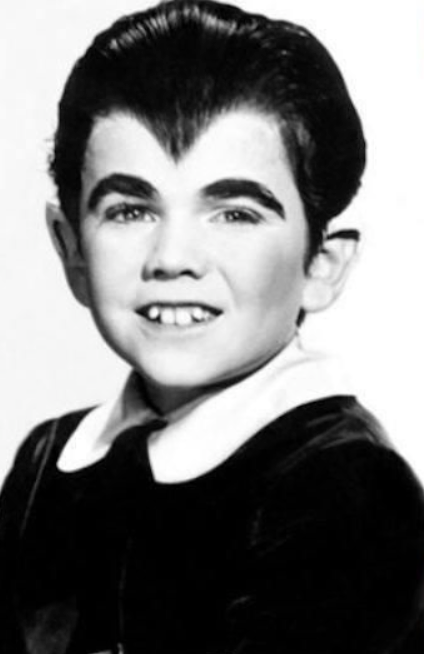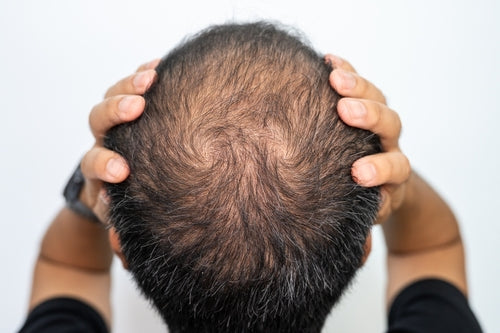
Crown Hair Thinning: How to Stop It? Effective Solutions and Treatments
Understanding the Phenomenon of Crown Hair Thinning
Crown hair thinning is a common issue characterized by the gradual loss of hair on the crown area of the scalp. It is predominantly associated with male pattern baldness or androgenetic alopecia, affecting individuals of various ages. Remarkably, approximately 95% of male hair loss cases can be attributed to androgenetic alopecia.
The primary culprit behind crown hair thinning is dihydrotestosterone (DHT), a hormone derived from testosterone. DHT exerts a detrimental effect on hair follicles, causing them to shrink and weaken over time. As a consequence, the affected area experiences hair thinning, eventually leading to balding on the crown.

Recognising the Early Signs of Balding Crowns
Identifying the initial signs of crown hair thinning empowers individuals to take proactive steps in addressing the issue promptly. Here are some common indicators to be mindful of:
1. Receding Hairline
A receding hairline is often one of the earliest signs of balding. You may observe your hairline moving backward, forming an "M" shape or a widow's peak.
2. Increased Hair Fall
While it is normal to lose approximately 50-100 hairs daily, excessive hair fall may indicate a problem. If you notice a substantial amount of hair in your brush or on your pillow, it could be a sign of crown hair thinning.
3. General Hair Thinning
Crown hair thinning often commences as a broader thinning of hair in the crown area. As the condition progresses, the thinning may gradually spread and become more noticeable.
Effective Measures to Combat Crown Hair Thinning
If you are currently experiencing crown hair thinning, rest assured that there are effective measures you can take to manage and potentially halt further hair loss. Consider the following options:
1. Watermans Grow More Elixirs Scalp Treatment
Embark on a journey to restore a fuller head of hair with the revolutionary Watermans Grow More Elixir scalp treatment. This game-changing solution harnesses the power of a unique formula to stimulate hair follicles, promote healthy hair growth, and prevent further hair loss. Watermans Grow More Elixir is formulated with natural ingredients that nourish and revitalize the scalp, creating an optimal environment for hair regrowth.
Free from harmful drugs and with no known side effects, Watermans Grow More Elixir has garnered rave reviews from countless satisfied users who have witnessed a significant reduction in hair loss and the rejuvenation of their hair. Embark on the transformative Watermans Grow More Elixir experience today and regain the confidence that comes with a fuller, healthier head of hair.
2. Finasteride
Topical finasteride or Propecia is a medication commonly used to treat male pattern hair loss. Available in pill form, it is typically taken once a day or every other day.
Finasteride works by blocking the production of DHT, the hormone associated with hair loss. While it may take up to a year to observe results, many individuals have achieved favorable outcomes with finaster ide. If you do not see improvements after a year of treatment, it is advisable to consult your doctor regarding alternative options.
While rare, some individuals may experience side effects such as finasteride shedding or severe sexual side effects. These side effects usually dissipate after discontinuing the medication. However, it is essential to be aware of potential finasteride side effects after stopping the treatment.
3. Minoxidil
Minoxidil, commonly known as Rogaine, is a well-established product for individuals experiencing hair thinning. By improving the health of hair follicles and enhancing blood flow to the scalp, minoxidil encourages hair growth.
Available as a gel or foam, minoxidil should be applied to the scalp daily. Some individuals may initially experience minoxidil shedding, a temporary increase in hair loss. However, there is substantial medical evidence and clinical trials supporting the efficacy of minoxidil in combating hair loss, including alopecia.
4. Low-Level Laser Therapy (LLLT)
Low-level laser therapy, also referred to as red light therapy or cold laser therapy, involves directing photons into the scalp tissues. These light particles can be absorbed by weakened cells, stimulating hair growth. This procedure is generally considered safe, easy to undergo, and less painful than hair transplant surgery.
While the effectiveness of laser therapy may vary among individuals, promising results have been observed in some studies. For instance, a 2013 study involving 41 men aged 18 to 48 found that laser hair treatment led to a 39% increase in hair regrowth over a 16-week period.
5. Platelet-Rich Plasma (PRP) Therapy
Platelet-rich plasma (PRP) therapy involves injecting a substance derived from the patient's blood into the scalp. It is believed to aid tissue healing, including the follicles where hair grows. The PRP is obtained through a process similar to centrifugation, which separates the substance from the blood and increases the concentration of healing proteins.
A 2014 study demonstrated the efficacy of PRP injections in treating androgenic alopecia, commonly known as male pattern baldness. It is important to note that, as with any injection-based procedure, there is a risk of infection, nerve damage, pain at the injection site, and tissue damage associated with PRP therapy.
6. Hair Transplant Surgery
Hair transplant surgery involves the transplantation of hair follicles from one part of the head to the balding area. The most common technique used is follicular unit transplantation, in which a strip of skin containing hair follicles is surgically removed from the scalp and transplanted to the affected area.
This invasive procedure is typically recommended for individuals with severe hair loss or those for whom physical appearance is of utmost importance. Hair transplant surgery can address various conditions such as widow's peak, balding, and receding hairlines. However, it is crucial to be aware of potential complications such as bleeding, infection, and scarring.
Preventing Hair Thinning at the Crown
Although certain types of hair loss are inevitable due to health issues or hormonal changes, there are steps you can take to minimize the severity of crown hair thinning. Consider implementing the following preventive measures:
Avoiding Hot Tools
Excessive use of hot styling tools can damage your hair. The heat from these tools dries out your strands, making them more prone to breakage. Fragile hair is more likely to thin and fall out at the crown. Therefore, it is advisable to limit the use of hot tools and opt for gentler styling methods.
Avoid Scratching the Scalp
If you experience an itchy scalp, refrain from scratching it. Scratching can damage the hair follicles, leading to hair loss. Vigorous scratching can irritate the scalp and harm the hair follicles, potentially causing thinning or even balding in the affected area. If you have an itchy scalp, try using a gentle shampoo and avoid scratching to maintain the health of your hair.
Follow a Healthy Diet
Adopting a nutritious diet is crucial for preventing hair loss. A diet rich in protein, biotin, iron, and omega-3 fatty acids can promote hair regrowth. Include foods such as salmon, dark leafy greens, beans, and nuts in your diet, as they are excellent sources of these essential nutrients. If necessary, consult your doctor to determine if hair supplements are recommended for you.
Manage Stress
Stress can contribute to hair loss, including crown hair thinning. Therefore, it is important to find ways to effectively manage stress in your life. Engaging in regular exercise, practicing meditation and deep breathing exercises, and exploring relaxation techniques such as aromatherapy or massages can help reduce stress levels.
Is Thinning Hair at the Crown Normal?
Thinning hair at the crown is a common characteristic of male pattern baldness, the most prevalent type of hair loss in men. As individuals age, it is completely normal for hair to thin. In fact, it is estimated that approximately two-thirds of men will experience some degree of hair loss by the age of 35.
If you are noticing crown hair thinning, especially at a young age, it may be worth consulting a doctor to rule out any underlying medical conditions that could be causing the hair loss.
Understanding Crown Hair Thinning in Women
Crown hair thinning is not exclusive to men; it can also affect women. While female pattern hair loss may differ in presentation and progression compared to male pattern baldness, thinning of the hair on the crown is a common concern among women.

Female crown hair thinning can be attributed to various factors, including hormonal imbalances, genetic predisposition, aging, certain medical conditions, and styling practices. It often begins with a widening part or noticeable thinning at the top of the scalp.
One of the primary contributors to crown hair thinning in women is dihydrotestosterone (DHT), a hormone derived from testosterone. DHT can bind to hair follicles, leading to their miniaturisation and eventual cessation of hair production, resulting in hair thinning and loss on the crown.
Early Signs of Crown Hair Thinning in Women
Recognising the early signs of crown hair thinning in women is crucial for prompt intervention and treatment. Here are some common signs to be aware of:
1. Increased Hair Shedding
If you notice excessive hair shedding, particularly around the crown area, it could be an indication of crown hair thinning. Pay attention to the amount of hair you find on your hairbrush, pillow, or in the shower drain.
2. Thinning Hair at the Part Line
A visible widening of the part line or noticeable thinning of hair in the central part of the scalp is a common early sign of crown hair thinning in women.
3. Reduced Volume and Density
Gradual loss of volume and density in the crown area can be an indication of ongoing hair thinning. Hair may appear thinner, lack fullness, and become more difficult to style.
Can Crown Hair Thinning Be Reversed?
If hair loss is primarily attributed to genetic factors, it is unlikely to naturally regrow on its own. However, there are various hair loss treatments available that can help restore a healthy and full head of hair. If you are concerned about crown hair thinning, it is advisable to seek professional guidance and explore appropriate treatment options.
Many individuals wonder if their hair will naturally regrow or if they need to seek treatment. While some degree of regrowth may occur, it is essential to recognize when professional assistance is necessary to address crown hair thinning effectively.




